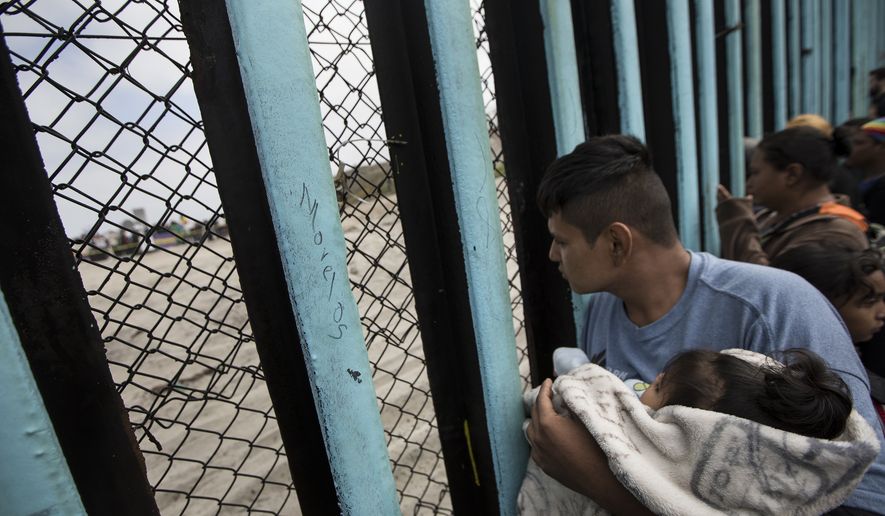More than 450 people from the illegal-immigrant caravan managed to make it into the U.S., officials told Congress on Tuesday.
Of those just 122 were arrested for jumping the border, while more than 330 others showed up at official ports of entry and demanded asylum, the officials told the House Homeland Security Committee, giving the first complete look at the effects of the caravan.
Despite the Trump administration announcing very publicly a zero-tolerance policy for the caravan, authorities have announced charges against only a small fraction of the 122 people who jumped the border.
Homeland Security officials weren’t able to give an exact number of people who did face charges, but the Justice Department only announced 11 prosecutions in California, and U.S. Customs and Border Protection pointed to a few others in Texas.
In court documents filed in California, a Border Patrol supervisor said the agency didn’t lodge charges against mothers who jumped the border with their children or, in one case, a woman who was eight months pregnant — but it was unclear how many people that covered in total.
The caravan began as about 1,500 people from Central America making their way north through Mexico to the U.S., traveling for weeks. Some got turned back in Mexico, others were granted protections in Mexico, but nearly 600 reached Tijuana, and of those more than 450 did get into the U.S.
“We encountered almost 500 of them,” said Ronald D. Vitiello, acting deputy commissioner of Customs and Border Protection.
The majority — more than 330 — followed government directions and waited to apply for asylum through the official ports of entry, and are now in processing in the U.S.
Of those, asylum officers have screened 216 already, and found 205 — nearly 95 percent — cleared the initial low bar of claiming a “credible fear” of being sent back to their home country, giving them an initial foothold in the U.S.
That’s “so low that nearly everybody can make it through,” said Rep. Martha McSally, the Arizona Republican who served as chairman of Tuesday’s hearing where officials detailed the caravan enforcement.
Many of the asylum seekers will be released into the country and eventually given work permits while they await their full asylum hearings, which can take years.
Only about 20 percent will be successful in winning those cases, while many others won’t even bother to pursue their asylum cases, instead ignoring summonses and disappearing into the illegal immigrant population, analysts said.
Lee Francis Cissna, director of U.S. Citizenship and Immigration Services, which handles the initial asylum screening, said the caravan migrants are emblematic of a much larger problem. His agency now has an asylum backlog of more than 300,000 cases, many of them likely to be bogus.
“A lot of people, we believe, do this on purpose,” he said, adding that once they’ve been waiting for six months they can apply for work permits, which is what many of them are seeking anyway. “They can wander around, working freely in the economy, for as long as it takes to hear their claims.”
Democrats said that attitude was a disservice to real asylum seekers who are fleeing horrid conditions in their home countries.
“We love to paint immigrants as criminals. That is not the complete facts and that is very offensive for me to see that continuing to happen,” said Rep. Nanette Barragan, California Democrat.
She said when she practiced as a lawyer, she handled asylum cases and said proving a case is difficult.
She said the low level of approval has less to do with people being undeserving and more to do with the difficulty of navigating the immigration courts. She said if more asylum-seekers had lawyers, more would be able to win their cases.
“Just because you don’t get asylum doesn’t mean that it’s a fraud,” she said.
• Stephen Dinan can be reached at sdinan@washingtontimes.com.




Please read our comment policy before commenting.